Key moments in NCAR supercomputing
From punch cards to petascale processing
October 5, 2012
|
State-of-the-art computing and
big-data processing have been
part of NCAR from the center’s
earliest years. Here's a snapshot
of selected hardware advances.
|
Micro-
processor
peak
teraflops
|
Memory
(terabytes)
|
Processors
|
Years in
service
|
1963
First supercomputer
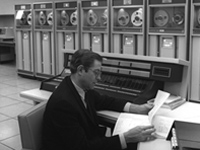
CDC 3600 (Control Data)
NCAR staff wrote the operating system
|
0.000001 |
0.000000032 |
1 |
2.5 |
 |
1977
First vector-based system
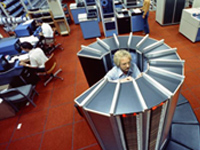
C1 (CRAY-1A, Cray Computer)
NCAR becomes Cray Computer's first
customer for this vector-processing system
|
0.000160 |
0.000008 |
1 |
12 |
 |
1988
First parallel processing system

Capitol (Connection Machine 2,
Thinking Machines)
With over 8,000 processors, this
machine enabled the NCAR-University
of Colorado Center for Applied
Parallel Processing
|
0.00717 |
0.001 |
8,192 |
4.5 |
 |
1999
Transition to clustered
shared-memory processors
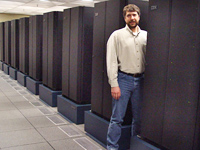
Blackforest (SP RS/6000, IBM)
NCAR makes a major investment in
conversion from vector-based to
parallel processing systems
|
1.96 |
0.7 |
1,308 |
5.5 |
 |
2008
Supercharged
speed and efficiency
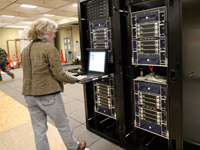
Bluefire (Power 575 Hydro-
Cluster, IBM)
The first in a highly energy-efficient
class of water-cooled machines to be
shipped anywherein the world arrives,
with speed that more than triples
NCAR's computing capacity
|
77 |
12.2 |
4,096 |
4.5 |
 |
2012
The next great leap
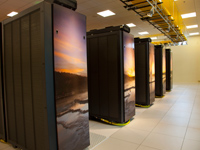
Yellowstone (iDataPlex, IBM)
NCAR enters petascale computing with
this massively parallel machine
|
1,600 |
149.2 |
74,592 |
new |
More supercomputing history at NCAR
NCAR's Computational and Information Systems Lab provides a detailed timeline of our supercomputers.
See all News